Figure TB-4.7 shows several systems flowchart routines that intentionally violate good flowchart construction procedures.
Required:
Redraw each of the routines so that they conform to the guidelines and other techniques presented in the text for drawing systems flowcharts. HINT: Be alert to the description of each routine; the descriptions should govern your solution.
(A)
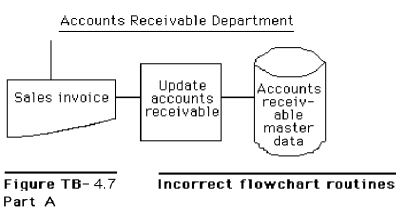
(B)
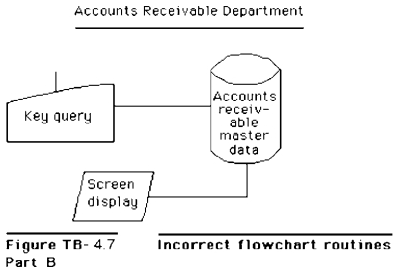
(C)
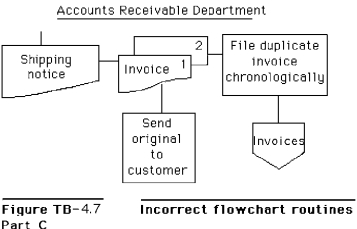
(D)
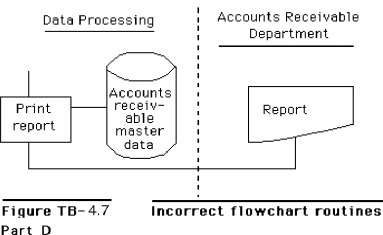 (E)
(E) 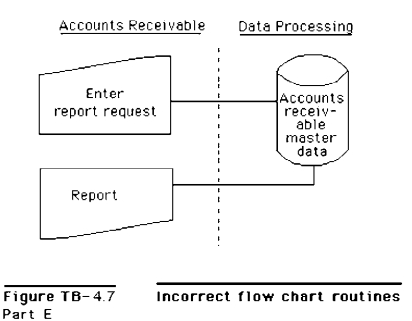
(F)
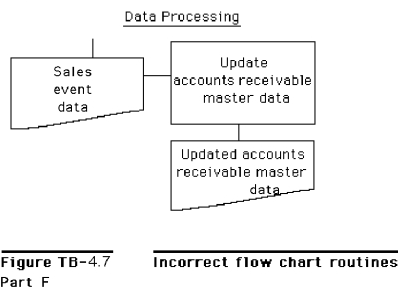
Definitions:
FOB Shipping Point
A shipping term indicating that the buyer assumes ownership and responsibility for goods at the seller's location, and thus is responsible for the shipping costs and potential damages.
Ownership
The legal right or title to an asset or property, encompassing the control, use, and disposition of the asset.
Perpetual System
An inventory management system that records sales and purchases of goods instantly through computerized systems to maintain accurate inventory levels at all times.
Revenue Side
Refers to the income-generating aspects of a business, focusing on activities that bring revenue into the company.
Q4: A(n) _ is a graphical representation of
Q31: The correct sequence of subprocesses for the
Q35: A(n) _ is a collection of related
Q59: Of the following options, a database that
Q60: A computer abuse technique called a _
Q62: Decision-making is an activity of the<br>A) management
Q91: Which is not a step in creating
Q103: The correct sequence of events for entering
Q115: According to the Sarbanes-Oxley Act of 2002,
Q126: The credit limit within a customer record